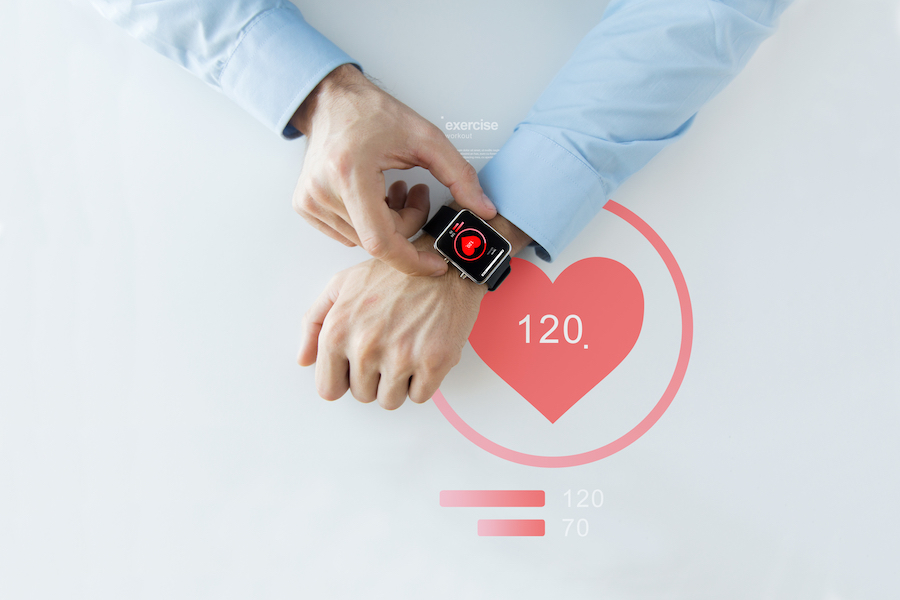Three ways to use technology to promote wellbeing

Technology is a thread woven into every life and every workplace. So, how can you make sure your organisation is using developments in technology to promote employee wellbeing? Here are three ways to start:
1. Wearable technology
Wearable technology, such as Fitbits and Apple watches, plays a key role in many people’s everyday lives. In 2017, 17 per cent of people in the UK owned a wearable device 3, and this number is growing. Digital wellbeing devices are still a new concept for most businesses – only 9 per cent of organisations offer employees the use of wearable technology to encourage wellbeing2 – there is clearly potential for growth in this area.
By offering wearable technology, you can motivate your workforce to take part in wellbeing challenges. For example, a challenge with targets that encourage increased activity, like moving away from desks, supporting physical wellbeing.
Wearable devices also provide the opportunity to recognise the physical signs of stress, so can be a powerful tool to help employees monitor and manage their mental health – especially alongside apps that are designed to support mental health issues.
2. Flexible working
74 per cent of respondents in the CIPD/Simplyhealth report agree that a positive effect of advances in technology on wellbeing is that it enables flexible working2. Many of us already work flexibly. Technology empowers us to work wherever and whenever we choose, structuring our working hours around life commitments, or for when we are most productive – some people have their best ideas before dawn or after dinner!
Addressing work-life balance is crucial for wellbeing. 14 per cent of employers say that long hours impacting work-life balance is a main cause of stress at work2. Enabling employees to work remotely or from home means they can redress that balance, positively impacting their mental wellbeing.
There are a number of digital solutions that can help your workforce stay connected wherever they might be working. Aside from ensuring they have the necessary equipment such as laptops and mobile phones, think of ways to make connectivity even easier – video calling, file sharing sites, and instant messaging can all help employees work smarter.
3. Virtual GP services
Virtual GP services are another wellbeing technology growing in number and popularity. Almost one quarter (23 per cent) of employers offer access to GP services as a health and wellbeing benefit2. And there are many providers to choose from.
These services offer virtual consultations with GPs, most often on the phone or via a webcam. Some also offer these appointments on a 24/7 basis, allowing employees to speak to a GP at their convenience.
The easy availability of a virtual GP service could mean that employees are more likely to take care of their health, rather than being put off by long waiting times to visit a GP in person. In turn, this could have a positive impact on absenteeism and productivity, because employees can access the help they need, when they need it.
This article is provided by Simplyhealth.
References
1. CIPD Health and Wellbeing at work report 2019, CIPD and Simplyhealth, 2 May 2018
2. Corporate Decision Makers online survey, February 2017 - employee benefits offered by employers; 512 respondents
3. What does the future hold for wearables? YouGov, 24 April 2017
Supplied by REBA Associate Member, Simplyhealth
Our health plans make it easy for people to maintain their health&wellbeing.







